On the Cusp of a Global Revolution?
The invention of the printing press, the industrial revolution, the end of two World Wars, and the internet. The COVID-19 pandemic is being tipped by some commentators to precipitate global economic and social change as momentous as these world-altering events. A ‘new normal’ is about to be unleashed.
Is this mere media hype? Or, in talking about a ‘new normal’, are we kidding ourselves about the very concept of normality, which, elusive at best, defies description and is more commonly understood as a setting on the washing machine rather than any discernible pattern of human behaviour?
Can we salvage any nuggets of wisdom or hope from the noise, confusion, fear, and business devastation caused by COVID-19, which might help us plot a way forward? This blog attempts to sort hope from hype and lay down some plausible parameters for speculation about a possible road to recovery for the global tourism industry.
Acknowledging Reality
The starting point in solving any problem is, firstly, to acknowledge it and then determine its size and impact. The global impact of COVID-19 has been, and will continue to be, devastating.
Some facts and predictions:
• Between 58-78% reduction in international tourist arrivals (UNWTO)
• Up to 1billion fewer international arrivals (UNWTO)
• 91% drop in international air traffic in July 2020, compared to July 2019 (IATA)
• Up to $1.2 trillion lost expenditure (UNWTO) = approximately 2.8% of global GDP
• Between 98.2 million – 197.5 million jobs lost worldwide (WTTC)
• Airline losses = c. $84 billion (IATA)
• Airline debt (IATA)
- 2019 = c. 5x cash flow
- 2021 = c. 17-18x cash flow
Airlines predict subdued demand for the next 4 years, along with the inevitability of mergers and failures. That said, it’s worth pointing out the last 10 years of airline profitability has been driven by only 20-30 airlines. This might be a chink of light, in that the survival of many airlines appears to be dependent not on the market, but on government support, which might keep many going, if their governments can afford to.
Widespread Implications
All of this poses a significant threat not just to tourism businesses, but also to many national economies. If tourism businesses aren’t thriving, there is a risk to the entire supply chain. This includes many businesses that are seldom thought of as being associated with tourism. Without work from tourism businesses, food suppliers, hauliers, and tradespeople in remote rural areas may themselves become unviable; with fewer people sleeping in other people’s beds, local laundries could be under threat; without wear and tear by visitors, African safari tent repairers may not have sufficient business to survive; and empty streets mean slim pickings for retailers and many other local services worldwide.
The knock-on impact on a wide range of local livelihoods, from farming and fishing, plumbers, electricians and builders, to rangers, artists, web designers, textile manufacturers, and many others dependent on the tourism economy, threatens communities everywhere. In developing countries that have become disproportionately dependent on tourism for jobs there is an added risk of civil and political unrest, if large numbers of people already close to the breadline are propelled back into poverty.
A further concern is investor confidence. Will investors be prepared to invest in a sector that has shown itself to be so vulnerable? Tourism has long been an economic success story – the first sector to bounce back after crisis, whether economic, natural disaster, terrorism or conflict. But this time it’s different. An economic sector that depends on the movement of people to create value means that, against the backdrop of a pandemic, it will be last in the queue for recovery. We have to hope that tourism will find a way to rediscover its mojo and once again prove resilient. But this will depend on a set of very different factors than previous crises, not least medical advances and hygiene controls, which will be required to underpin public confidence.
We’re All Epidemiologists Now
Public awareness of epidemiological statistics has never been greater, thanks to wall-to-wall media coverage of the pandemic. Nor has there probably ever been a more globally pervasive fear of a single illness, which has so deeply affected people’s behaviour and disrupted everyday life around the world. Consequently, for tourism to recover, medical-epidemiological reassurance will be the catalyst that will prompt people to travel, particularly internationally, in sufficient numbers to sustain many tourism-dependent businesses and economies.
Such reassurance will depend on medical advances and effective health management measures, with the following possible implications for boosting travel confidence in stages over the next two years:
- Lockdown release and quarantine removal, albeit with intermittent spikes and temporary local returns to lockdown and sporadic re-imposition of quarantine in response to outbreaks, are likely to characterise the rest of 2020 and early 2021.
Hopefully, this will become much more targeted and regional than is the case at the moment. For instance, blanket quarantining by the UK government of travellers from all Spain, including the Balearic and Canary Islands, seems illogical, given these islands' physical separation, and distance from mainland Spain, and direct air routes to UK. (Tenerife is twice as far from Madrid as Madrid is from London.) The recent distinction between Madeira and the Azores from mainland Portugal by the UK in its imposition of quarantine for returning travellers is a step in the right direction.
- Testing, tracing, and isolating, much trumpeted but poorly implemented so far, could provide the next level of reassurance that would encourage people to travel further afield. Hopefully, more widespread and effective testing might pick up towards the end of 2020 and into 2021. This is more about learning to live with COVID-19 and taking personal responsibility than it is about eradication of the disease.
However, whether testing will be broadened to an economically necessary extent, as opposed to being restricted purely to domestic healthcare needs, is the subject of raised eyebrows. If anyone doubts the UK government’s lack of understanding of the travel and tourism sector to the UK economy, they need only consider this recent reaction from UK Transport Secretary Grant Shapps: “There is pressure on the testing system. I’m not sure we should be prioritising testing for holidaymakers.” It seems the image of tourism as a ‘candy floss’ industry of negligible economic heft is still alive and well amongst Britain’s policymakers.
- Therapeutic drugs to manage some of the co-morbidities associated with Coronavirus could be the next big step. Minimising the long-term, life-changing and life-threatening, aspects of COVID-19 could reduce widespread fear of catching the virus and thereby inspire greater confidence in moving around. Trials currently underway appear optimistic.
- Vaccination, the Holy Grail of recovery, is unlikely to be discovered, trialled, licensed, manufactured and distributed at scale and widespread inoculation undertaken, until late 2021 or 2022, if indeed it is discovered at all. This would be the ‘let off the lead’ moment, which would be transformational for the tourism industry. It would inspire widespread confidence to travel amongst those lucky enough to be vaccinated (assuming the vaccination has a reasonably long life) and provide the key to opening borders, minds, and wallets.
Reassurance Is Critical
But, until the great leap forward of vaccination is achieved, we are likely to have to live with this virus and adopt new ways of behaving to manage the risk. So, for the foreseeable future, the way destinations and tourism businesses manage the health and hygiene of their residents and visitors will be critical to inspiring confidence to travel amongst potential visitors.
Countries that have handled the pandemic well, have a reputably good healthcare system, and a reputation as trustworthy will be ahead of the game. Those that have poor healthcare systems, a reputation for political obfuscation (particularly where press freedom is restricted and the regime is less than openly democratic), and have not been seen to handle the pandemic well, will find it harder to attract visitors. No-one will believe them; and credibility in their ability to implement appropriate hygiene measures – from social distancing to sanitation – will be lacking.
For probably the first time ever, addressing people’s fear will be an important component of marketing communications for destinations and tourism businesses. Flying in the face of received wisdom has become a necessity. Normally, mentioning a problem, such as recent conflict, natural disaster, or security threats, is a no-no when trying to recover tourism in a crisis-hit destination, as this tends to reinforce a negative image of the destination. Past experience has shown traveller confidence to return to post-crisis destinations generally builds through exposure to positive messages, even where there is widespread awareness of a recent crisis. With regard to such one-off crises, memories are short, travellers tend to be optimistic, and the default expectation is faith in a return to normality.
But, again, this time it’s different. The crisis recovery rulebook has been thrown out the window. This pandemic has touched every country; and a consciousness of the risks has become widely embedded in people’s psyche worldwide. Consequently, people want reassurance before they book. Various consumer sentiment surveys reveal this as heading the list of people’s concerns. So, those places and businesses that can offer credible reassurance on hygiene and health security will, in the short-term at least, gain a competitive advantage. “Visit us because we’re safe” (or at least have robust hygiene-health precautions in place) will no longer be a reminder of risk, but a reassurance that it has been minimised!
But such communications must be subtle. They must reassure more than remind. They must tackle the issue without ‘scaring the horses’. Sensitive messages in PR and social media are the best way to communicate this, while still promoting the appeals of the place.
Cardiff has done this very well.
In recognition of the need to reassure, many countries have introduced COVID-19/hygiene seals of approval – from the ever-pioneering Singapore’s ‘
SG Clean’, which hotels feature along with their 4-star plaques on the outside of their properties as a clear symbol of reassurance to visitors, to VisitBritain’s “Good to Go” marque and many more. Some are independently verified by external inspectors, whereas others, such as VisitBritain’s “
Good to Go” are merely an online self-certification process. Given the serious, widespread concern about this disease and a declining trust in government and officialdom, you don’t need to be a rocket scientist to figure out which system will have more credibility – an independently verified scheme or a self-certification process.
Reopening Isn’t the Same as Recovery
‘Staycationing’ has been the unsurprising success story of Britain’s post-lockdown opening up, with self-catering accommodation being one of the outstanding beneficiaries. But the same motive driving the preference for rented accommodation – a desire to avoid crowds and commitment to social distancing – has hit group travel, especially coach touring, cruising, and public transport, as people have felt more comfortable travelling by car. This has disproportionately benefitted rural areas and disadvantaged city destinations.
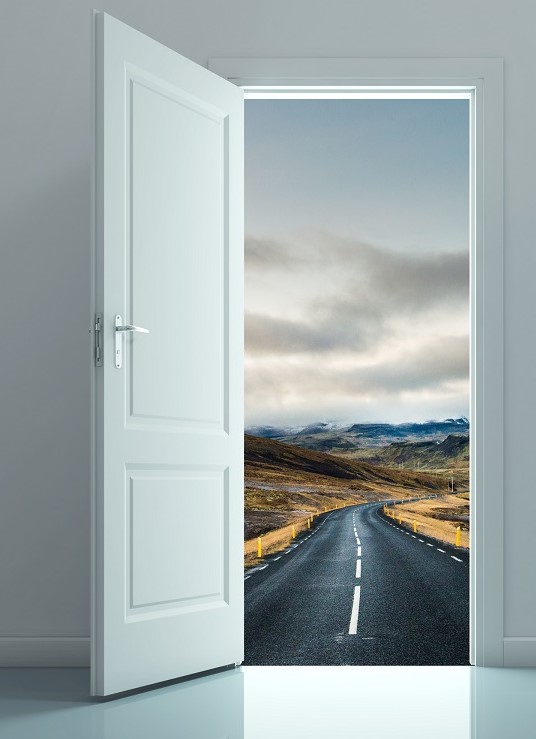
Some short-haul international destinations have benefited too, but quickly lost momentum as sporadic disease spikes have resulted in hastily applied government quarantine responses. Long-haul travel has barely featured, with several countries, such as Australia and South Africa closed until next year.
But the main issue is volume. Restaurants, coach companies, and visitor attractions can’t survive half-full; airlines aren’t profitable at low load factors; hotels can’t operate at marginal occupancy rates. Businesses need a critical mass of visitors to be viable; and this needs to be sustainable over the longer-term – a tough ask, as we’ve missed much of the summer and are heading into the off-season. The threat of “three winters” hangs over the tourism industry, which, without further government intervention or a massive stroke of luck, is likely to mean considerable job losses and many businesses going bust.
Recipe for Recovery
Recovery will depend not just on reopening, but on sufficient numbers of people feeling confident to travel again. And restoring confidence will require a mix of effective destination management, demonstrable implementation of social-distancing systems, and reassurance on hygiene regimes. This will be even more important in the coming autumn and winter seasons, as the people with time to travel in this period will generally be older (and potentially more vulnerable), who don’t have children at home, many of whom will be retired, and who can choose when to travel, if they feel confident in doing so.
Right People, Right Time, Right Message
Targeting the right people with the right message at the right time has always been a fundamental principle of tourism marketing. But it has never been more important. People who might otherwise have travelled happily are split psychologically: between FOGOs (‘Fear of Going Out’) at one extreme and YOLOs (‘You Only Live Once’) at the other, with a range of nuanced attitudes to travel and to different destinations in between. The key, particularly for destinations, is to target those who are more willing to travel in the short term, with the right messages and through the right media channels. They may be fewer than in normal times, but there are people whose pent-up demand for escape makes them open to wooing right now.

Younger YOLOs are the most eager. But the product must be right. Cultural sights may take a back seat to adventure and romance. Older BLISTOs (‘Bucket List Ticker-Offers’), who are conscious of time passing and the plethora of places still to see might be the next most willingly mobile group. But hygiene considerations are likely to be more important to them. Others, who may range between FOGOs and YOLOs are likely to become more mobile as time passes, medical progress is made, and hygiene reassurance becomes widespread and acquires credibility.
Phasing tourism marketing according to people’s travel propensity adds a new dimension to marketing planning. Understanding your customers, knowing what they want and being able to offer it is no longer enough. Monitoring consumer sentiment, in terms of who is willing to travel when, will be critical to marketing effectiveness. Otherwise the risk of wasting marketing investment is high and the prospect of business success low.
Forget ‘New Normal’ – Focus on New Opportunities
So, what are the longer-term, more momentous changes that might be a legacy of COVID-19?
A starting point has to be the recognition that, unlike in the past, when tourism was the first sector to bounce back after a crisis, whether natural disaster, economic woe, conflict, violence, or terrorism incident, this time it will be at the back of the queue. This is because the very essence of tourism – the movement of people from home to somewhere else – is the very thing that inspires fear of infection.
Some of the implications and opportunities for the future might be as follows:
Staycations are likely to trump international travel in many countries for the next 6-10 months, and possibly beyond, dependent on the epidemiological situation.
Sadly, those countries that have little tradition of domestic travel, limited tourism infrastructure, and widespread poverty, such as many developing nations, will be hardest hit, in that they will have limited prospects of replacing dwindling inbound international visitors with local travellers. This raises the tragic prospect of increased poverty and, potentially, civil unrest, as people struggle to feed themesleves.
Those that do have a significant potential domestic market need to ensure the range of experiences they offer and the quality of their tourism infrastructure is as good as it can be – and in many cases better than it has been – to attract people who might otherwise be used to higher standards on foreign holidays.
Flexcations: There seems to be no end to jarring, linguistic hybrid terms to describe new travel trends. Nevertheless, they pretty much do what they say on the tin and enable comprehension at first glance. This may also indicate the rate at which travel patterns are changing.
Holiday periods have morphed enormously from the traditional ‘trades weeks’ to ‘open season’ for holidays, as the transition from manufacturing to service industries and blue collar to white collar jobs has enabled much greater flexibility in holiday-taking. Families are still bound by school holiday periods; but many of the big spenders and target of so many destinations (SINKS- single income/no kids, DINKS – double income/no kids, and empty-nesters) can choose when they take a holiday.
The internet has amplified this opportunity to travel at will, not least by enabling many people to work remotely. And, as people have been required to work from home during the pandemic, they have increasingly realised that remote working doesn’t need to be home-working. They can work from anywhere there’s a decent wi-fi signal. This has increased the opportunity for ‘flexcations’ – a mix of holiday and work, at any time of the week and year in a place of their choice. The opportunities both for self-catering properties and for extending the season are clear.
Seasonal extension: Less of a linguistic mangle but still visually descriptive, a new term is emerging in the USA to describe the ‘shoulder-season’: the ‘
stretch season’. The ‘problem child’ for the visitor economy worldwide, tourist boards from India to Iceland, Norway to New Zealand, have spent many days and many more dollars wracking their brains trying to fill the low season. Various euphemisms have been deployed in attempting to pitch a perceived disadvantage as a positive appeal: Zambia coined the term ‘emerald season’ to describe its rainy season, emphasising the lush greenery of its landscape; Scotland’s ‘Autumn Gold’ campaign promoted the attractions of autumn; and others have emphasised the relative tranquillity of the quiet season.
The combination of pent-up demand, ability to travel at any time, and possibility to work from anywhere, offers an opportunity to stretch travel into the shoulder and even off-seasons in a way that people may previously have not considered. Businesses that can offer the right low season product, which will be very different from their main season offer, to the right target markets, could not just take advantage of this trend, but they might also accelerate it.
Business travel: Zoom has given many people their life back by saving them from attending endless, pointless meetings during the pandemic.
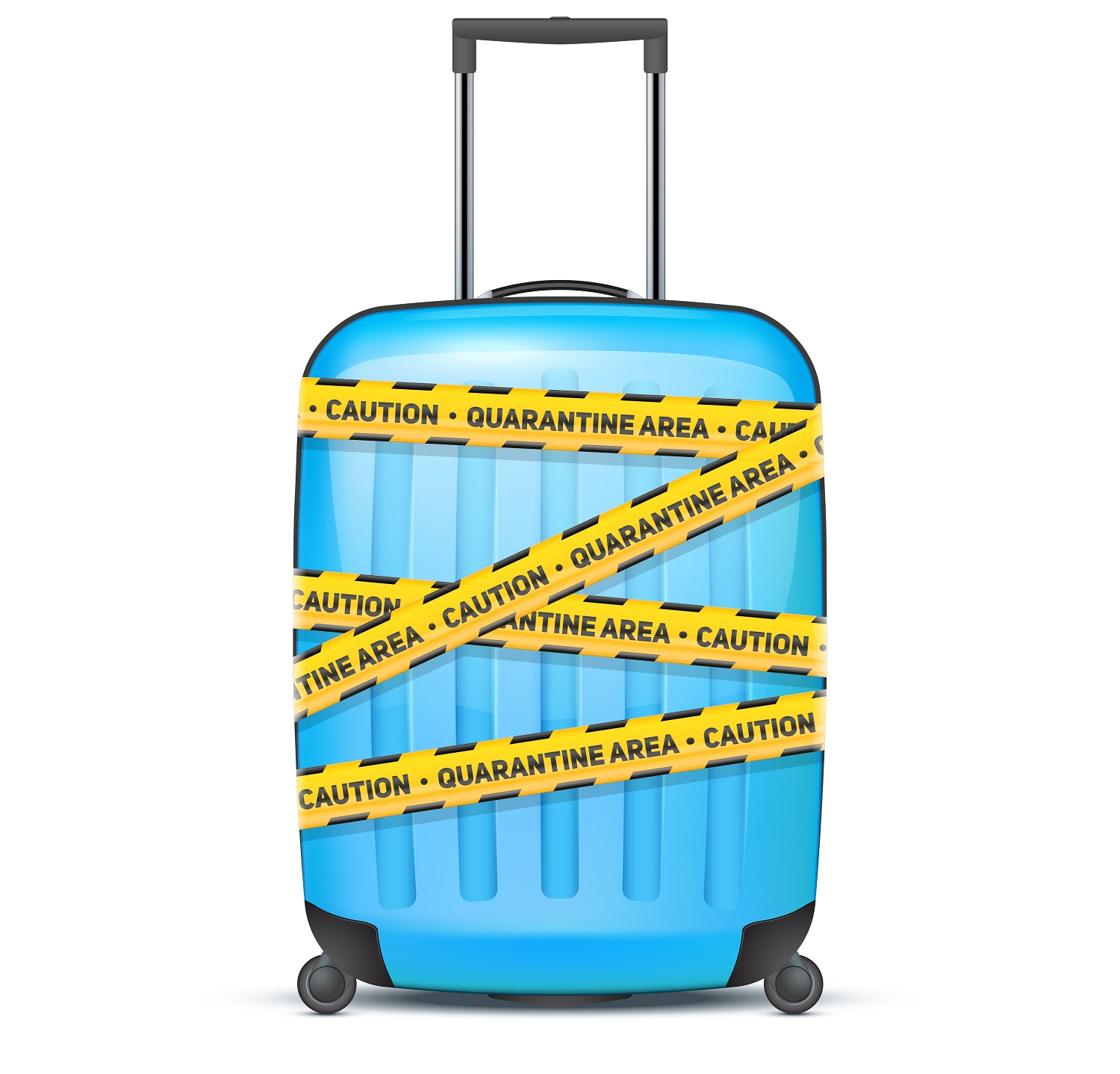
Online telecommunications are likely to remain a lasting replacement for inessential face-to-face meetings, not least because this saves costs, is more time-efficient, and can be undertaken from home. The need to travel for business is likely to be subject to considerably greater scrutiny in future and is, consequently, unlikely to regain its previous frequency.
This has significant implications for hotels, airlines and city centre restaurants. Business and city centre hotels in particular may need to review their target markets and revise the product they offer to suit a different market. Hotels in some countries have begun to offer rooms as temporary office spaces, changing the concept of working from home to '
working from hotel' - a boon for parents of young families trying to work in cramped apartments, if their company will pay the rental.
Conferences: Conferences, on the other hand, may buck the declining trend in business meetings and regain some, but not all, of their previous popularity. This is because the human appetite for social engagement, so long suppressed during lockdown, will re-emerge. People will seek like-minded company in both social and business life. Conferences fulfil this in a way that business meetings don’t. And, even though much research around the world amongst conference delegates identifies networking as one of the main benefits, the prospect (and justification) of spending time exchanging ideas and learning about a subject of mutual interest with similarly motivated people endows conferences with a validity that business meetings can’t match.
The trick for conference organisers will be to find the ‘validity sweet spot’, which will enable potential delegates to justify attendance to themselves and their bosses…..and avoid being ‘travel-shamed’.
Blended working: Both businesses and employees have found benefits and value in home-working.  Will this continue, even as the UK government encourages people to return to work to reinvigorate city centre economies?
Will this continue, even as the UK government encourages people to return to work to reinvigorate city centre economies?
It is likely that it will.
This will probably become a significant, permanent change in the way we work. ‘Blended working’, whereby people work from home for part of the week but also spend some time in the office, is likely to characterise the new world of work for those whose jobs make this possible: a ‘win-win’ situation for businesses and employees for reasons outlined above.
This will challenge businesses to focus on the reasons and timing for people to be in the office, and to revitalise the experience – rather than just providing a soulless ‘hot-desking’ facility. It will also challenge city centre restaurants, cafes, and bars to reassess their offer to ensure it remains relevant to people whose working patterns are more fluid and may feel less need to feed and socialise near their workplace.
Cities: The buzz and energy that contributes so much to the attraction of cities has dramatically reduced their visitor appeal during the pandemic. Crowded urban areas make social distancing difficult. This is devastating for city economies. ‘World cities’ are feeling the pinch more than most. Unlike the rest of the UK, which is predominantly dependent on domestic tourism, London is three times more dependent on international (79%) than domestic visitors (21%) to stay in its hotels.
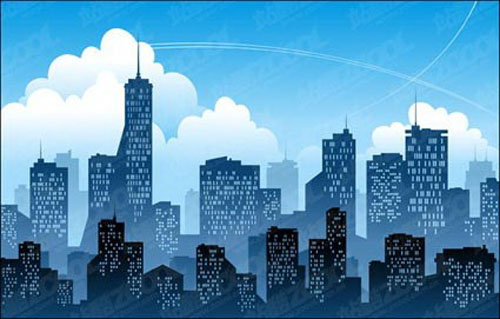
There is no doubt city tourism will rebound one day to a significant extent. So many cities are so uniquely appealing and offer a vibrance and cultural wealth that can rarely be found in less metropolitan settings. But it could be too late for many businesses and attractions.
So, in the meantime, cities will have to focus seriously on destination management: managing traffic and pedestrian flows, providing basic facilities and keeping them clean (e.g. litter, toilets), and addressing public transport capacity limits, particularly numbers of people per carriage, on buses, and in busy public places. Enforcing, and being seen to enforce, these measures will be as important as putting them in place; otherwise the city will lose credibility as a safe place to visit.
Countryside: With the increasing popularity of rural areas, there is a significant risk of overcrowding in popular ‘hotspots’ at peak periods and weekends, as we’ve seen in various places throughout the summer. Rural space has become rural congestion. This calls for a robust approach to destination management, the like of which has never been pursued in Britain before. Serious attention needs to be paid to ensuring the adequacy of the tourism infrastructure – or to imposing unwelcome restrictions on access and limiting the number of visitors to certain places at certain times. Closed toilets, overflowing litterbins, blocked roads, and congested sites must not be allowed to characterise the UK visitor experience.
This may have happened because of the numbers of people travelling domestically, who would, if they could, otherwise have gone overseas or visited a shopping centre. But even if only half these extra visitors, who have rediscovered the appeals of their own country this year, continue to travel domestically in future, it is unlikely the ‘hotspots’ will be able to cope with them in peak periods. And, if this becomes the norm and faces overseas visitors when they return, they soon won’t.
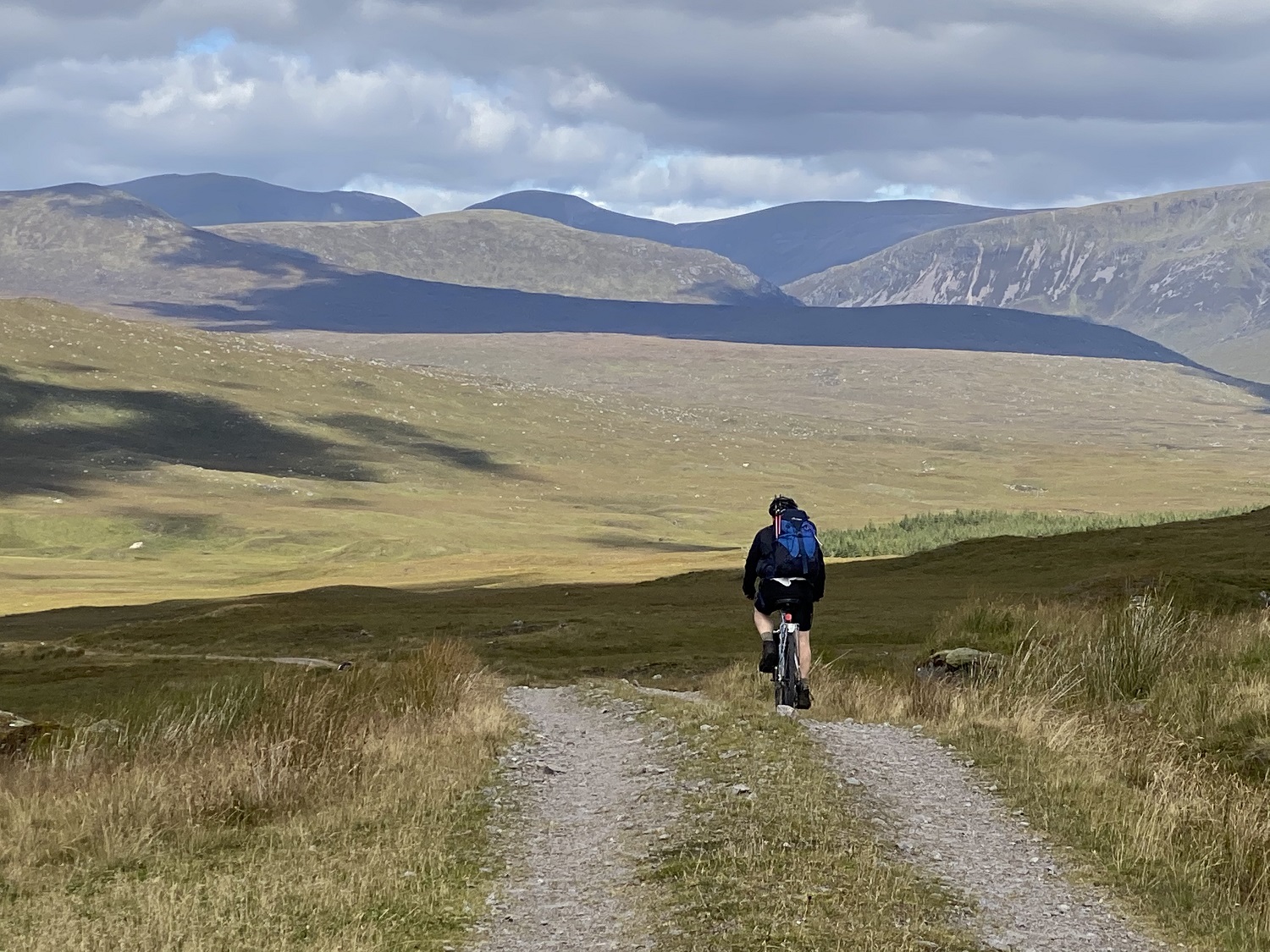
A major obstacle to addressing this situation is the financial constraints on local authorities, who should be the bodies responsible for resolving these problems. A rebalancing of both powers and funding from central to local government is likely to be the only way to address this, and many other local challenges, effectively. A change in mindset is also needed by national government, local authorities, DMOs and tourism businesses from an exclusive focus on marketing to destination management. Encouraging more people to come to a place at a time when it is struggling to cope will only exacerbate the problem; and subsequent negative publicity will render marketing fruitless.
Sporting events, festivals, theatres and cinemas: We have seen sporting events restart behind closed doors, followed by tentatively opening up to a limited number of spectators, only for the doors be closed again to spectators as the virus has spiked. This undulating, stop-start trajectory is likely to be the pattern for festivals, theatres, cinemas, sporting and other large events, until widespread immunisation can be achieved (e.g. through vaccination).
Retail: The gradual hollowing out of city centres, largely as a result of the expansion of out-of-town shopping centres with car parks and growth in online shopping, has been well documented for some time. This has been exacerbated by lockdown, fear of association with other people, and home-working, as a result of the pandemic.
But will this accelerate the decline of the High Street? Or could it be the catalyst for its revival?
Hopefully, the crisis in city centre retail might focus the minds of urban planners and local authorities to come up with ideas for reinvigorating city centres. The ‘
Fifteen Minute City’ is an admirable vision, whereby city centres would be re-designed to attract residents back in, with a mix of housing types and local services. Access to goods and major services, such as schools and healthcare would be within a fifteen-minute walk or cycle, and people would live closer to their place of work.
‘Living where you work’ isn’t a new concept. It’s where we came from before ‘progress’, technology and economies of scale drove families to the suburbs, workers into brutal commuting regimes, and next-door neighbours into anonymity. Property companies might balk at the idea of reinstating neighbourhoods where profit-producing palaces of glass and steel once housed tier upon tier of hard-working commuters. But the reconstitution of communities might improve not just people’s quality of life, but also the economic energy of the city. This might seem far-fetched, given the architectural density of our cities. But it seems clear the writing is on their walls. City centres are unlikely to return to their full former glory as thriving shopping and business centres. So, radical ideas are needed.
Slow tourism: There is some evidence that, in exploring their own country post-lockdown, people are discovering the appeal of lingering longer in one place, rather than ‘Instagram-snacking’ and moving on to the next iconic site. Rather cumbersomely, described as ‘slow tourism’, the idea of spending more time to get under the skin of a place looks as if it might be catching on amongst a wider audience.
There will still be ‘destination-collectors’ with the attention span of a goldfish, whose ability to remember where they’ve been will depend on recognising the icon behind them in each selfie. But, if the trend towards lingering longer in one place grows, as seems likely, the opportunities for artisans, craftworkers, local food producers and many more exponents and explainers of local traditions, cuisine, arts, and culture will grow too.
Responsible travel: The last few years have seen a rise in commitment to sustainable, responsible travel, which benefits local communities and minimises the impact on the natural environment. Some commentators have also observed a surge in responsible attitudes to consumption and travel during lockdown, as people have been unable to indulge in materialistic and consumptive behaviour to the same extent as pre-pandemic, such as visits to shopping centres, non-essential purchases, or discretionary travel.

Whether this will change their behaviour once these indulgences become available to them again remains to be seen. But, along with an increased awareness of climate change, ‘flight-shaming’, and an understanding of how individual choices – from recycling to ethical sourcing – can contribute towards environmental sustainability, improve fair trade, and reduce human rights abuses, there is some evidence that this consciousness, particularly amongst younger people, is influencing them to expect higher standards of sustainability in the products they buy and the trips they take. This generation appears to be far more willing than previous generations to put their money where their mouth is on issues of sustainability.
Group and cruise travel: For all the concerns about hygiene, social distancing and fear of infection discussed above, it is hard to see how group coach and cruise travel can recover to an economically viable level before widespread vaccination. Nevertheless, cruise companies are remarkably buoyant and are introducing major measures to prevent infection transmission and boost confidence in sailing. Also, cruise travellers are disproportionately loyal compared to most other types of traveller. So, while there will doubtless be a loyal core of repeat cruisers who will be keen to travel as soon as circumstances permit, whether there will be enough of them to enable ships to sail profitably remains to be seen.
Travel companions: Traditionally, single travellers, couples (primarily younger and empty-nesters), and families have accounted for a large proportion of international travellers. Interestingly, after the 9/11 terrorist attacks, there was a noticeable pickup in multi-generational travel by Americans. Three generations started travelling more together: parents, children and grandparents. This was attributed to a revival of the desire to spend time with, and stay close to, loved ones, following the harrowing experience of 9/11.
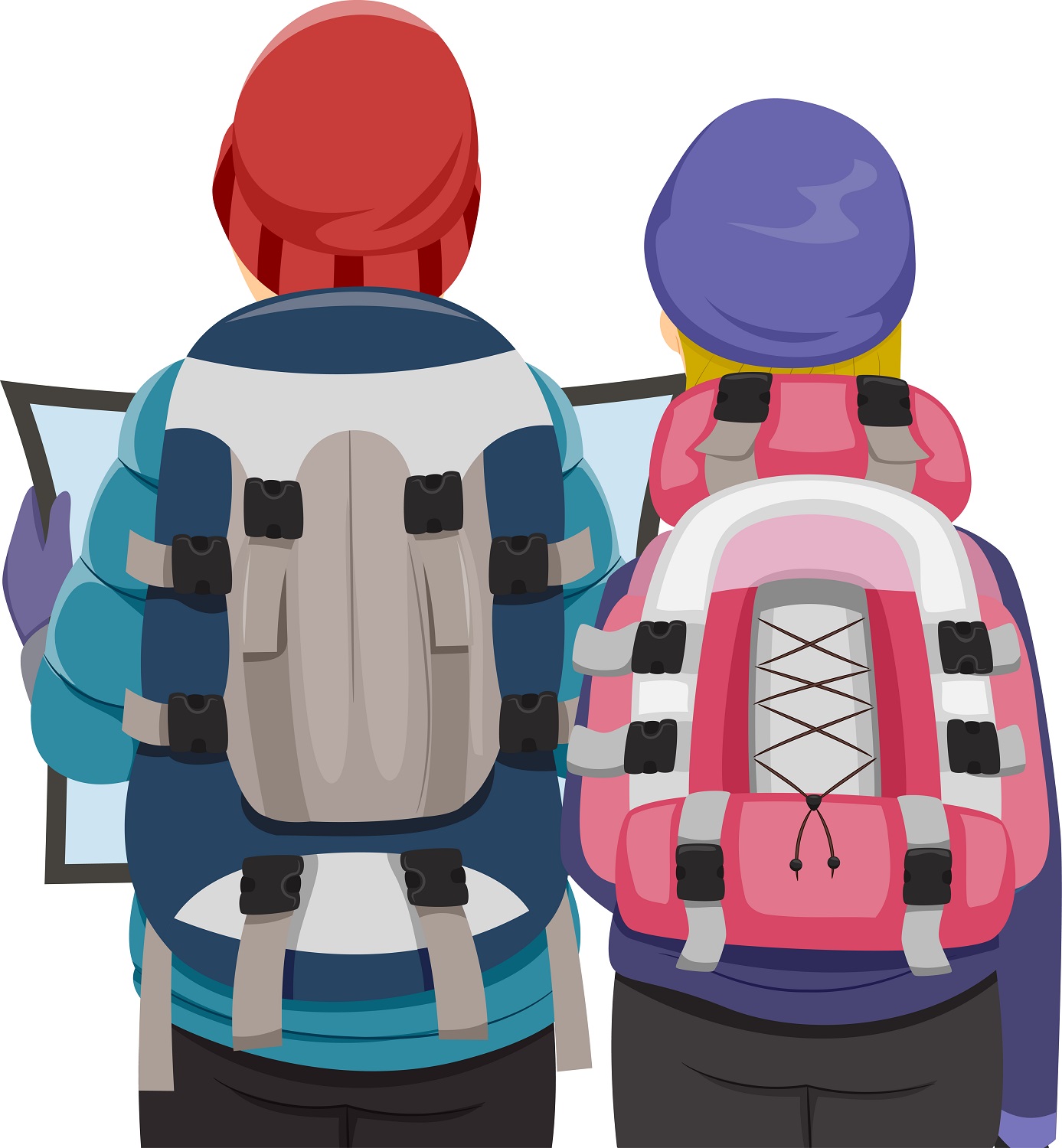
We may see a similar sentiment encourage a growth in multi-generational holidays together, as travel opens up after the experience of the pandemic. This could be a lucrative opportunity, particularly for domestic hotels and self-catering accommodation to cater for three-generation needs.
Accommodation: Self-catering has been the star performer of the UK domestic tourism firmament post-lockdown. The freedom it offers and ability to self-isolate, has been the reason for its success, with which serviced accommodation has been unable to compete.
While hotels are undoubtedly likely eventually to come back into their own, the speed at which they do so, based on consumer confidence, will determine their ability to survive. Those that are doing well at the moment include smaller, country house and boutique hotels, and hotels in coastal areas and heritage locations; but city centre hotels are struggling.
Perhaps surprisingly, in spite of redundancies and business failures, hotel investment is continuing in pockets around the UK. This may be a response to, and in anticipation of, the boom in staycations, which seems likely to continue as long as overseas travel remains largely off the agenda. Hopefully, it may continue beyond a recovery in international holidays as, having discovered the delights of their own country, people’s appetite for further domestic exploration will have been whetted.
Public transport: Sadly, from an environmental perspective, public transport, and especially trains, has been widely rejected in favour of the car as a preferred means of travel within Britain. This is understandable, given social distancing concerns. But it doesn’t bode well for a more environmentally sustainable future for domestic tourism.
Advance booking: The imperative of social distancing has reduced throughput in restaurants, museums, attractions and many other tourism businesses.

Advance booking has become much more necessary. However, while this may have put an end to impulse visits, the upside is that visitors can visit places such as the Sistine Chapel and know they will have a better, less crowded experience. And advance booking provides the certainty they will get in.
For these reasons – of visitor flow management, social distancing reassurance, and a quality visitor experience – we can expect to see advance booking become much more the norm and impulse-purchasing become far less possible. This means visitors will have to spend more time planning their trips, reminiscent of the early days of travel, when opportunities were constrained by a more limited travel infrastructure. Businesses too will need to develop systems to accommodate advance booking and more structured visitor management.
Cancellations and refunds: The overnight imposition of quarantine on visitors returning from certain countries, concern about potential new lockdown restrictions at home, and fear of new outbreaks in overseas destinations, have created a climate of uncertainty for both travellers and tourism businesses.

The inflexibility of many operators’ travel terms and conditions has meant that, when travellers have had to cancel, they have often not been able to claim a refund for their holiday. This has resulted in booking hesitancy and a growing distrust of airlines and tour operators.
Those airlines, tour operators, and hotels that are prepared to waive cancellation fees or reduce their cancellation window, will find this an increasingly competitive advantage. Giving people confidence they can cancel much closer to their departure date, if the worst happens, will restore their confidence both in travelling and in the travel industry. Reducing draconian cancellation clauses and extending the free cancellation period is a trend that is likely to increase, as it will be driven by a combination of consumer demand and business pragmatism.
Consumer credit as cash flow: Another nail in the coffin of airline and tour operator credibility has been the time taken to provide refunds. The trade press have been awash with stories of thousands of travellers let down by airlines and tour operators, who have failed to refund their customers within the period legally defined by the European Package Travel Regulations. Admittedly, a crisis of the enormity of this pandemic was not foreseen when these Regulations were drafted; and refunding all clients within the required 14 days has proved financially impossible for many operators.
Nevertheless, this has come about to a large extent because operators have been using customer payments as cash flow to pay a variety of debts. Consequently, they have been insufficiently liquid to pay the unanticipated rash of claims for refund. To some, the entire travel industry looks like a giant Ponzi scheme whereby innocent customers have been left to carry the can for what they see as poor financial management by travel businesses, in which business and government have colluded.

Unsurprisingly, there have been calls for the government to regulate this and introduce protection for customers’ money. An escrow or trust fund system seems the most likely possible outcome, whereby travellers’ money can’t be spent by the tour operator until either the customer has returned or the hotel and other services booked for that customer have been paid for. Companies such as Trailfinders, who are members of the
Travel Trust Association, which operates such a trust account system, may find this a competitive advantage until such time as new legislation might be introduced requiring extended financial protection for travellers’ holiday money.
Prices: Even before the impact of Brexit on travel and living costs, prices are likely to rise as a result of the pandemic. With airlines losing c. $84 billion and airline debt increasing to 17-18 times cash flow (per IATA), airfares will probably have to rise, as confidence in flying remains on hold. The heyday of impulse-purchasing feels like it could become a heady memory. Jumping on planes to places their passengers have never heard of for the weekend is a thing of the past, at least for the immediate future. This will take not just some of the fun out of short-breaks, but also much of the low cost out of no-frills airlines. Whether this aviation business model will return is an open question.

Social distancing concerns and regulations, which mean fewer diners in restaurants, half-empty coaches, and fragile hotel occupancy, threaten business viability at current rates. Additional cleaning, sanitation, socially distancing measures, and protective equipment requirements are imposing significant additional costs on businesses (estimated at c.$130,000 per annum for a 250-bed hotel running at 60% occupancy –
Optii Solutions). These costs to business are exacerbated by increased staff training needs and unavoidably lower productivity. These will, inevitably, be passed on to travellers.
It seems the great period of democratisation of travel may, if not over, be taking a step backwards, as prices are forced to rise. Nevertheless, however dormant the appetite for travel during this pandemic, price increases are unlikely to be so great as to suppress demand in the long-term. Demand for holidays and the travel industry’s creativity will ensure a wide range of tastes and budgets will continue to be catered for. The legacy of affordable travel, started by the post-war emergence of charter airlines, followed by package holidays in the 1960s, boosted by the Jumbo Jet in 1969, and accelerated by the low-cost, no-frills airlines in the 1990s, will not be abandoned. It might just cost a little more for a little less.
However, the looming threat of deeper recession and further unemployment, following the termination of the UK government's Job Retention Scheme at the end of October, suggests many people's pockets will be hit in the months to come. So, the main challenge for tourism businesses, in light of higher costs and fewer people travelling in the short-medium-term, is to remain viable until sufficient demand returns in the longer-term.
High tech – low touch: Technological innovation will undoubtedly accelerate as a result of the pandemic. People now want a ‘low touch’ journey through the booking, purchasing, and delivery process – whether in shopping, travel, or any other services – to minimise the risk of infection.
This means a tendency towards digital as default: cashless and contactless payment, touch-free boarding and border control, self-service check-in and check-out. Electronic boarding passes and contactless payment have become ubiquitous in recent years, some hotels have introduced self-check-in, and apps have been developed to provide directions, information and booking. But we can expect to see this quickly becoming much more the norm. Businesses that dispense with hard copies and move information provision, booking, and payment online, will be able to offer the reassurance people crave. And this will aid their competitiveness. Printed menus, in-room information folders, tickets and guides, and anything that someone else might have touched, will soon have waste paper status.

However, this is not just about basic functionality, whereby existing manual processes are replaced with electronic solutions. More notably, the move towards electronic information provision and visitor management offers a significant opportunity for innovation. Apps, such as that devised by Italy’s Cinque Terre region, not only offer a booking facility but, by providing real time information on visitor flows and traffic congestion, can enable people to make informed decisions about when to visit. This is not only empowering for visitors; it also contributes significantly towards efficient destination management, by shifting responsibility for managing visitor flows partially on to visitors, and thereby taking some of the stress off the destination or attraction.
Expect to see strides forward in artificial intelligence and voice-activated services too. As a direct response to minimising the spread of COVID-19 through shared surfaces,
Abu Dhabi International Airport has installed 53 ‘touchless gesture recognition’ lifts: a wave of the hand is all it takes to indicate the intended floor or direction desired.
Eurostar is planning to introduce facial recognition for boarding, thereby enabling a passport-free and seamlessly, touchless journey from end to end – unless of course, you want a coffee! These are just the start.
Importantly, this need not remove the human factor from the traveller-host relationship. On the contrary, it can reduce human involvement in tasks characterised by bureaucratic drudgery, such as boarding, check-in and check-out, and free people up to indulge in more socially constructive roles and concentrate on improving customer service. We may be a long way off embedding chips under our skin; but we are likely to see unimaginable transformation in things that make our lives easier, most probably operated from our wrist (smart watch) or pocket (smart phone).
Trust: Establishing trust will be critical for destinations and businesses, more than ever before. People will want to feel confident the destination they are going to, the accommodation they will be staying in, the restaurant they will eat in, and the transport they will use, will be as safe and hygienic as possible. Research by travel insurance firm, All Clear, also revealed that the state of the health service in the country they intend to visit is of major importance to visitors in choosing their destination.
But it’s not just about communicating COVID-19 safety measures that businesses have put in place. The marketing promise will need to be demonstrably sustainable. Cancellation and refund policies will need to be clear……..and adhered to. And online reviews will need to be credible and seen to be authentic. Businesses that can inspire trust and prove they live up to their promise will have an even greater advantage over those that can’t. The pandemic has made this more important than ever.
Conclusion
Finding a balance between realism and hope has not been easy. In trying to find some glimpses of optimism against a gloomy canvas of recession, business devastation, unemployment, closed borders, quarantine, repetitive lockdown, and understandable fears of infection, past performance provides no roadmap for the future. 
However, there are a few chinks of light:
- The thirst for travel, people’s curiosity about other places and cultures, and an inherent human desire for social contact, have not disappeared. They will be reignited when circumstances permit, and people feel safe in pursuing them again.
- Many have already begun to re-indulge these urges, most especially on staycations and eating out under the UK government’s “Eat Out to Help Out” scheme. And people have responded to domestic tourism incentives in other countries from the USA to Malta and Greece.
- Reassurance about health and hygiene security measures will be critical to persuading people to move. Contrary to normal advice, reassurance needs to be incorporated as part of their marketing message by destinations and tourism businesses.
- Three major things will underpin traveller confidence as we move into 2021:
Testing: Widespread testing, tracking and tracing will provide a significant boost in confidence to travel, if it is sufficiently widely available, quickly turned around, and effectively implemented.
Trust: Establishing and maintaining trust will be more important than ever. This means: convincing people adequate health and hygiene measures are in place; honesty in communications; authenticity in product and destination reviews; and delivering the marketing promise.
Technology: This will be the great leap forward, not just in enabling a ‘low-touch’ trajectory through every stage of the traveller’s journey; but also through innovative ways of delivering information, easing the process, and delivering a stupendous experience. ‘Digital as default’ will be the new mantra.
Finally, while a vaccine might be the light at the end of this tunnel, we will have to learn to live with COVID-19 for the foreseeable future. Fortunately, experience suggests we are a pretty resilient species. We are good at navigating a course between reason and hope. And that has to be something for the tourism industry worldwide to hang on to.

The question is not whether we will travel widely again, but where and how soon. And that will be determined by medical developments, personal confidence, business credibility, and astute destination management.
But, if tourism is to recover its full potential, both as a driver of economic development and as a contributor to sustainable communities, national and local government will need to grasp the nettle of strategic leadership and develop robust, transformational plans, not piecemeal, ‘finger-in-the-dyke’ tactics and challenge funds masquerading as strategies.
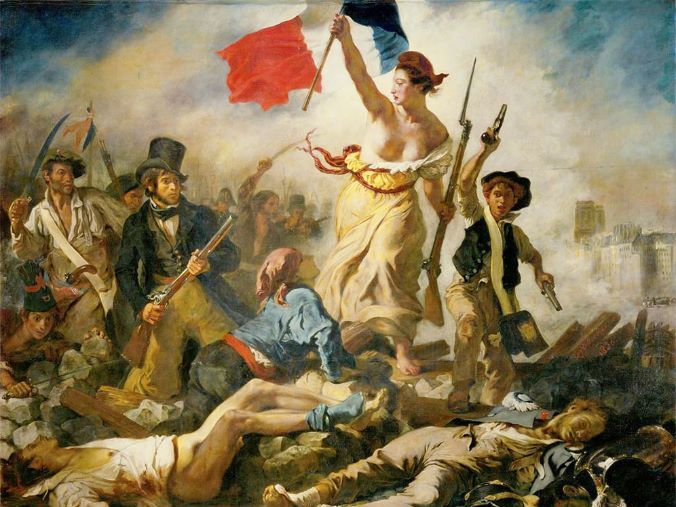


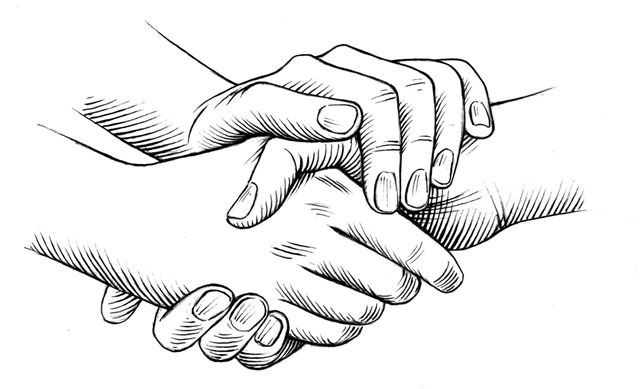



 Online telecommunications are likely to remain a lasting replacement for inessential face-to-face meetings, not least because this saves costs, is more time-efficient, and can be undertaken from home. The need to travel for business is likely to be subject to considerably greater scrutiny in future and is, consequently, unlikely to regain its previous frequency.
Online telecommunications are likely to remain a lasting replacement for inessential face-to-face meetings, not least because this saves costs, is more time-efficient, and can be undertaken from home. The need to travel for business is likely to be subject to considerably greater scrutiny in future and is, consequently, unlikely to regain its previous frequency.  Will this continue, even as the UK government encourages people to return to work to reinvigorate city centre economies?
Will this continue, even as the UK government encourages people to return to work to reinvigorate city centre economies?


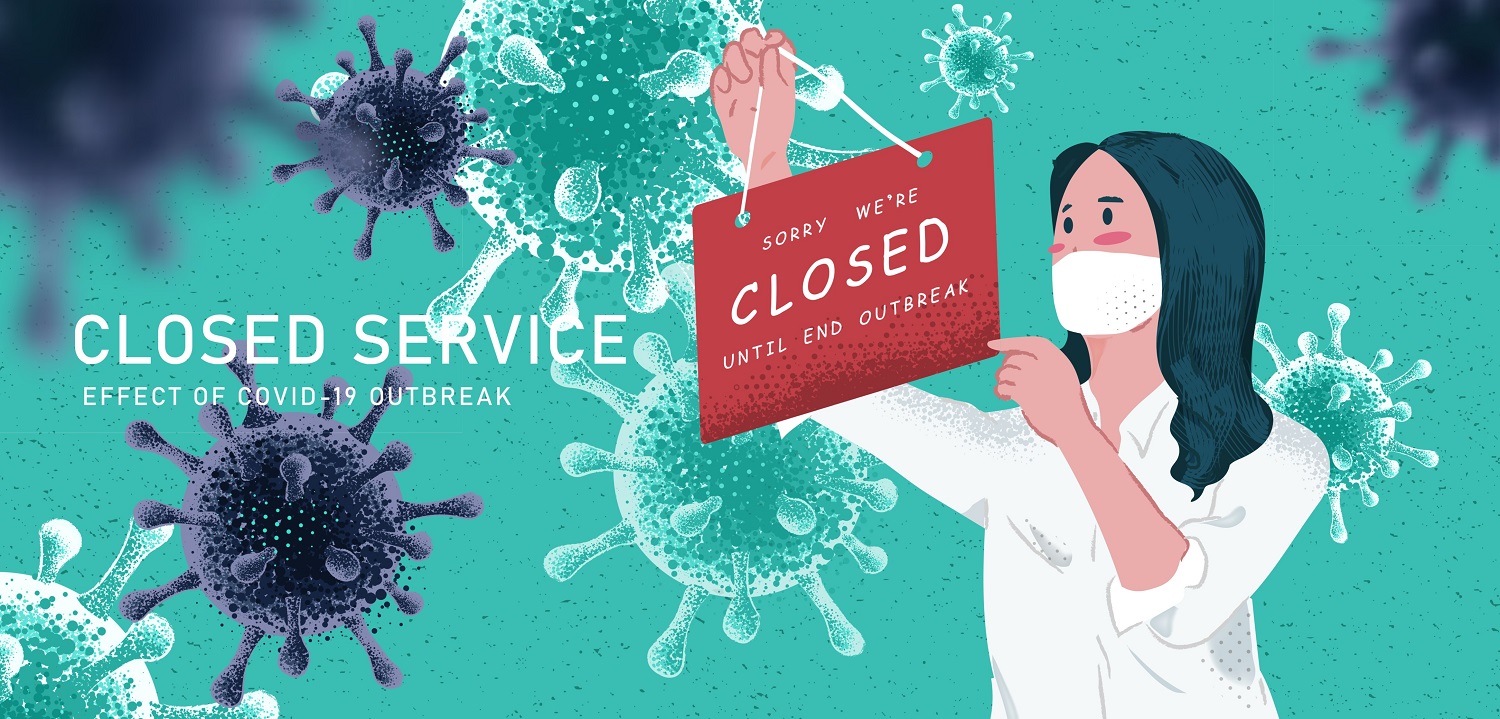


 Advance booking has become much more necessary. However, while this may have put an end to impulse visits, the upside is that visitors can visit places such as the Sistine Chapel and know they will have a better, less crowded experience. And advance booking provides the certainty they will get in.
Advance booking has become much more necessary. However, while this may have put an end to impulse visits, the upside is that visitors can visit places such as the Sistine Chapel and know they will have a better, less crowded experience. And advance booking provides the certainty they will get in.  The inflexibility of many operators’ travel terms and conditions has meant that, when travellers have had to cancel, they have often not been able to claim a refund for their holiday. This has resulted in booking hesitancy and a growing distrust of airlines and tour operators.
The inflexibility of many operators’ travel terms and conditions has meant that, when travellers have had to cancel, they have often not been able to claim a refund for their holiday. This has resulted in booking hesitancy and a growing distrust of airlines and tour operators. 





